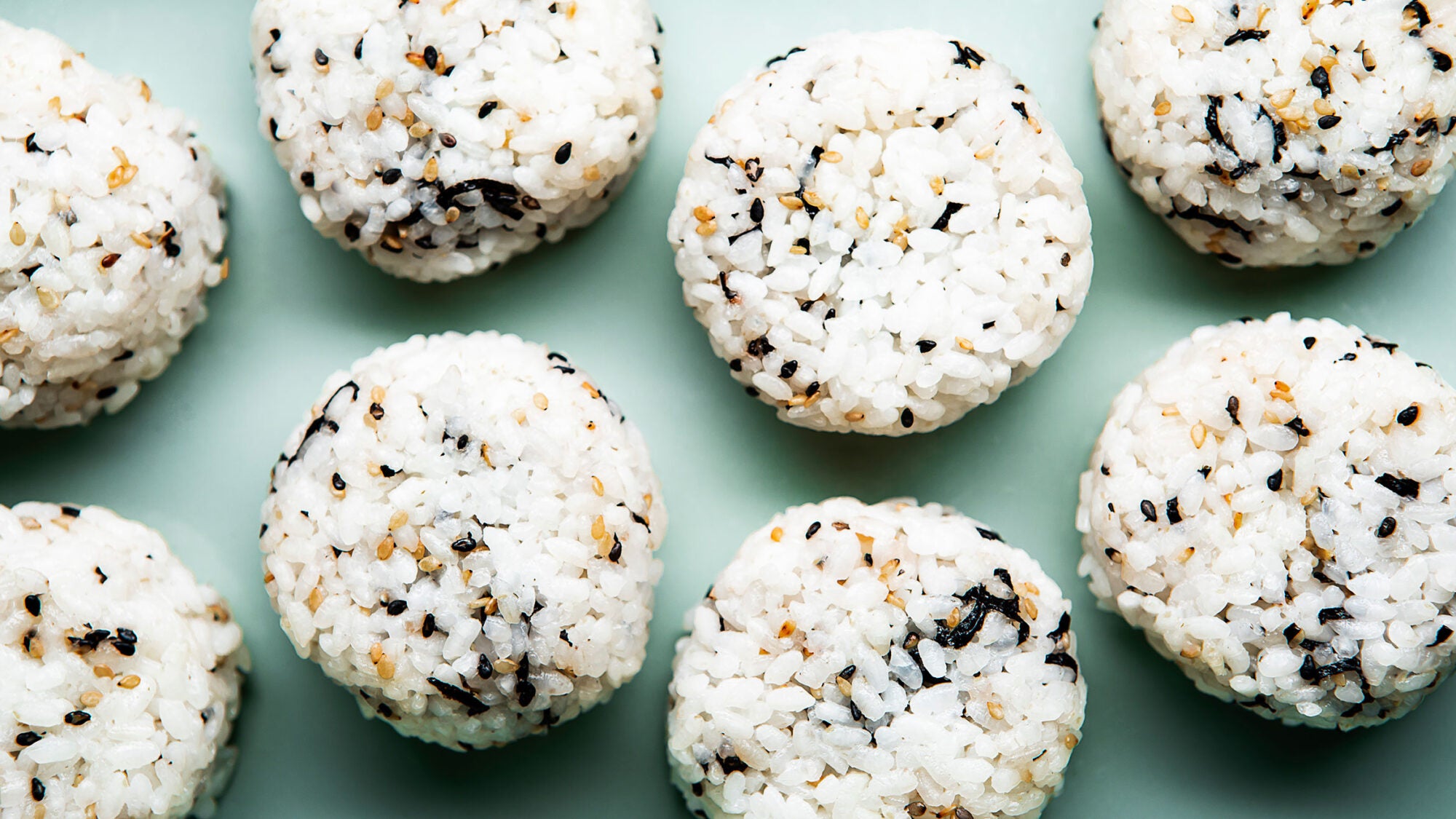
Armed with a countertop cooker and some furikake, you can make a fresher, warmer rice ball.
Plastic-wrapped triangles and flattened discs of onigiri—Japanese rice balls—occupy rows of refrigerated real estate at any given Family Mart from Osaka to Okinawa, and most likely at your friendly local Asian grocery store in Los Angeles or Chicago or Tulsa, too. Wherever you find them, the packs of seasoned rice and tasty pickled things take on many forms: cloaked in a sheet of dried seaweed-like forest-green gift wrap (or, like its emoji, mostly bare and covered with a Post-it-size strip), filled with salty cod roe or morsels of chicken karaage, studded with nutty sesame seeds throughout, or ordered at an izakaya—burnished and lightly griddled.
Onigiri are a quick bite of umami that always satisfies. I routinely stash some in my tote if I happen to pass by a Dainobu or a Cafe Zaiya while running errands in Manhattan, then unwrap them a few hours later for an unfussy, utensil-free snack when hunger strikes. One makes for a snacky companion to your deskside lunch, and a few more can fill you up in a pinch.
At two or three bucks a pop, onigiri have become such a food of convenience for me that I’d never considered making them at home. They are cheap, and there’s really nothing that should stand in the way of my grab-and-go habit. But making my own bare-bones onigiri was a low-lift project worth tackling. All I needed was a fistful of still-warm rice from my cooker and seasoning from my pantry.
To start, I generously sprinkled two cups of cooked short-grain rice (I like the Koshihikari variety) with a flurry of all-purpose nori fume furikake, then wet my hands (which prevents the grains from repeatedly sticking to them) to form the rice into ½-cup-size pucks. An onigiri mold would have sped things up and made them look exactly like the ones I bought prewrapped, but configuring them into near-perfect discs by hand—as they are traditionally made—felt like more of a small win. Using a six-inch-long rectangular cut of nori to wrap around both sides gave me that same handheld gratification.
Each bite of dried seaweed produced a satisfying crackle—and high-quality gold or grade-A certified nori makes all the difference here. The rice inside was warm, fluffy, and far from gummy—which happens all too easily when it’s refrigerated. Having eaten steaming bowls of plain rice for my entire life (and premade onigiri for most of my adult life), using fresh rice was like learning something new about an old friend.
Since then, I’ve brushed the onigiri tops with miso, sugar, and mirin and lightly grilled them on each side until the grains are crisped up to a toasty outer layer to make miso yaki onigiri. I’ve scaled up the rice amount and made a dozen or two for friends to snack on before diving into dinner—but also to eat alongside dinner. Whole shiso leaves have replaced the seaweed sheets for an herb-y upgrade. Salty, yolky mentaiko has entered the mix, stuffed into the inside—along with spicy tuna and briny umeboshi fillings. And maybe someday, I’ll even graduate to making them with an onigiri mold.